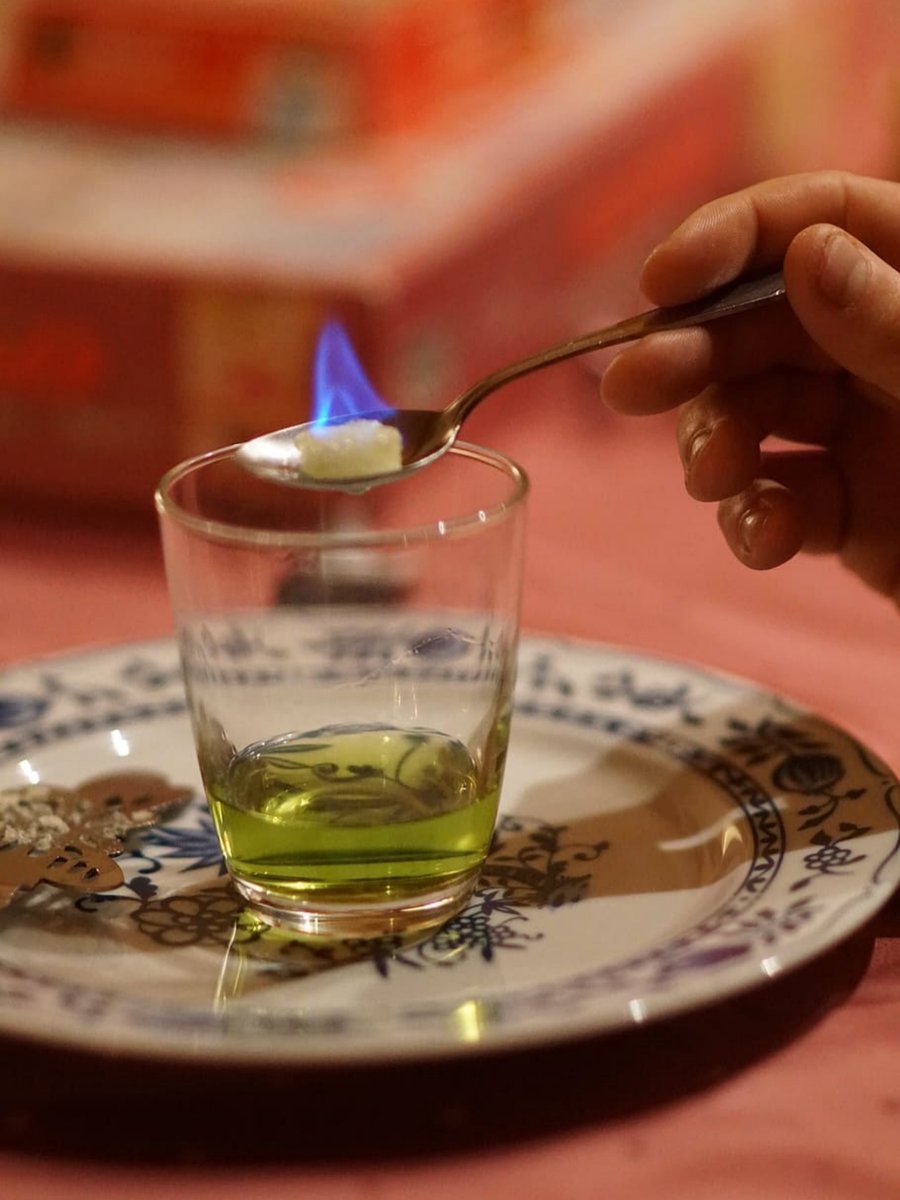A beverage that reached the apex of its popularity during the Belle époque that immediately preceded WWI, absinthe has developed a reputation in our collective consciousness as an elixir that is by turns magical, and maddening.
Consumed – as popular historians would have you believe – by leading figures in 20th century art and literature; it is infamously attributed to have caused Vincent Van Gogh’s self-mutilation. Absinthe spurred Ernest Hemingway to perform liquor-fueled “knife tricks” and even Oscar Wilde, so famously resilient to the intoxicating properties of drink, once opined that any more than three glassfuls of the stuff would cause one to see “monstrous and cruel things”.
Today, we’re here to set the record straight: stripping back the shroud of infamy that surrounds this decidedly old-fashioned libation; so as to get a more realistic portrait of its character – and more importantly, explain how you can enjoy it in 2023.
RELATED: Knowledge Distilled – The Difference Between Tequila And Mezcal
What Is Absinthe?

Beyond the distinctive green tint that lends absinthe its infamous la fée verte nickname, you’d be surprised at just how little modern drinkers know about the spirit’s method of production. In simplest terms: absinthe is a derivation of several plants – most crucially, wormwood – that is mixed together with anise, fennel, and a varying assortment of medicinal herbs.
Traditionally, it is classified as an overproof spirit – bottled at an ABV anywhere in the range of 45-74%. Historians generally attribute the first examples of absinthe to Neuchâtel (a canton in Switzerland), where they were marketed by physician Pierre Ordinaire as an aid for general wellbeing.
It is the addition of wormwood (a.k.a. artemisia absinthium) that has given absinthe its reputation as a formidable hallucinogenic. The leafy plant contains a chemical known as thujone, which when consumed in sufficiently large quantities, acts as a convulsant.
To achieve absinthe’s trademark colour, most producers will infuse the spirit with a small quantity of the ingredients used during the distillation. Secondary herbal notes vary: but aside from the essential trifecta of wormwood, anise and fennel; different producers have tried adding aromatics like star anise or lemon balm over the years.
Exactly Just How Strong Is Absinthe?

Probably the most egregious misconception about drinking absinthe is that the spirit causes one to hallucinate – among the primary reasons why it famously became known as the ‘Green Fairy’.
Seasoned absinthe drinkers will tell you that this is blatantly untrue, since thujone – the chemical that allegedly triggers hallucinations – is present in such miniscule amounts that the only plausible explanation for people “chasing the Green Fairy” would be due to overdrinking.
Nevertheless, prior to the advent of modern science, this myth of potency was so widely circulated that absinthe consumption was made illegal in 1914 – in France, the US and across much of Europe.
Thankfully, in the 1990s, the European community recanted on this practice; once again making absinthe legal, in accordance with a range of manufacturing guidelines.
The Best Ways To Drink Absinthe?

Contrary to popular belief, since absinthe is technically not a liqueur, one of the most common ways to consume it historically was by ‘louching’. Akin to what you may have seen in a very early episode of No Reservations, the process consists of pouring absinthe into a glass; with a slotted spoon, filled with a sugar cube, placed over the rim.
Cold water is slowly dripped through the spoon into the absinthe (first passing through the sugar cube) and in so doing, the spirit thickens and takes on a cloudy appearance. Spirit experts refers to this mode of drinking as the ‘Parisian style’; with it being popular among those who enjoy diluting absinthe in order to unmask its sweet, botanical characteristics.
Alternatively, if the idea of setting up a flaming sugar cube and tasting wormwood oil doesn’t really appeal; you can take baby steps toward becoming a devoted fan of the Green Fairy by first adding absinthe to your cocktails.
The spirit’s punchy, licorice-laden flavour has made it a stalwart with mixologists for decades – often used to ‘rinse’ glassware used in a classic gin sour recipe (i.e. the Corpse Reviver No. 2).
Looking to put your first bottle of absinthe on the back bar at home? Then try some of these options:
- Green Fairy – classic and full-flavoured (60% ABV)
- Tatsumi Distillery – clean and balanced (58% ABV)
- Never Never ‘Dark Series’ – vibrant and rare (55% ABV)
















